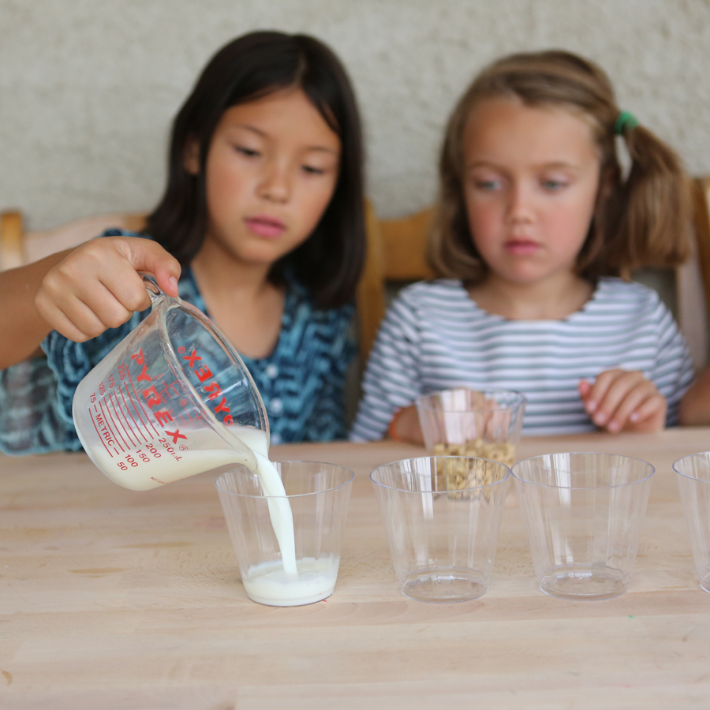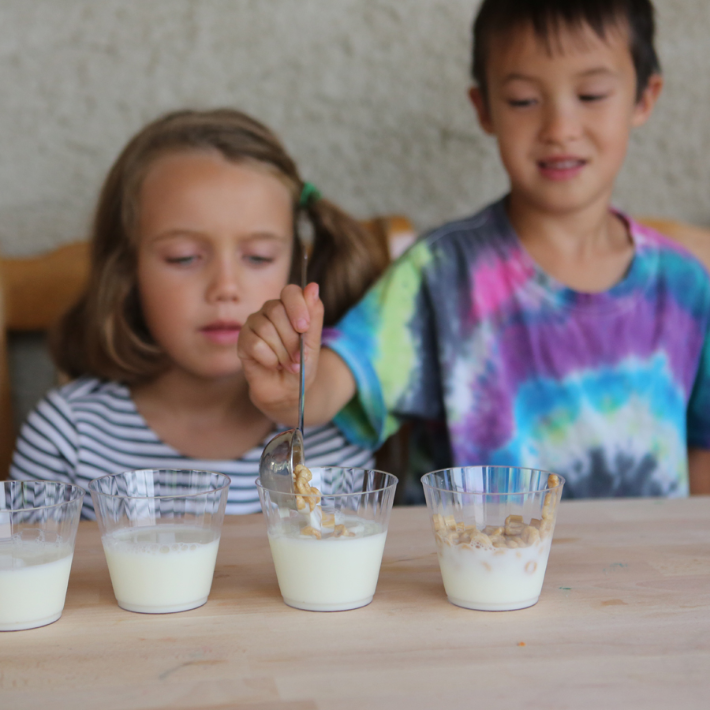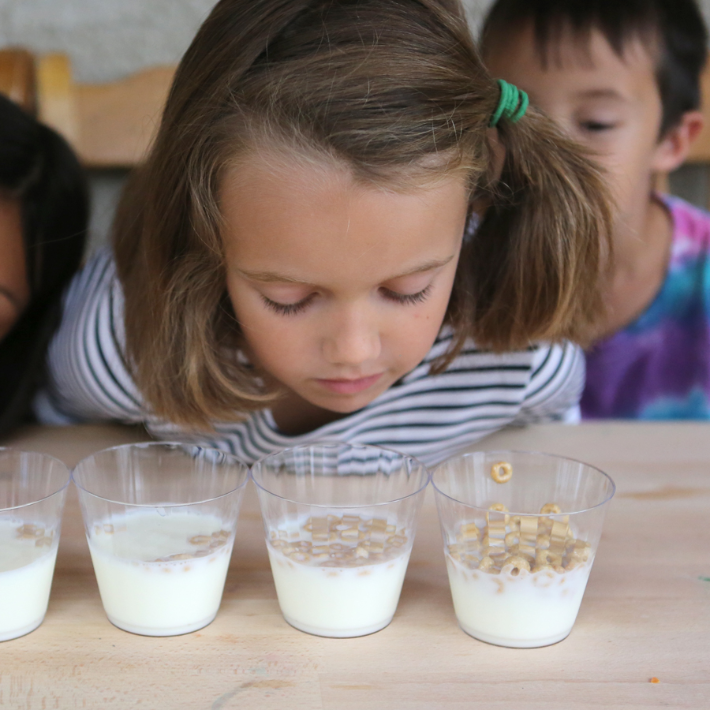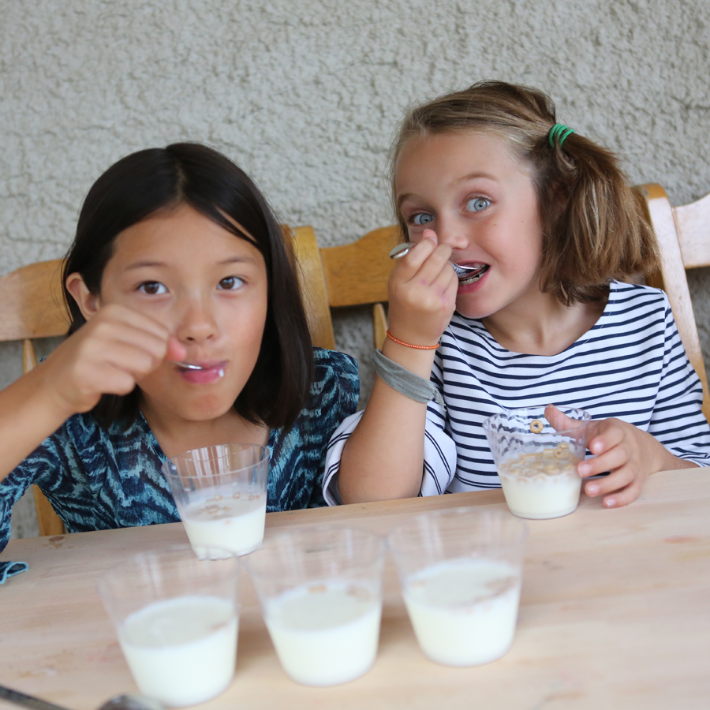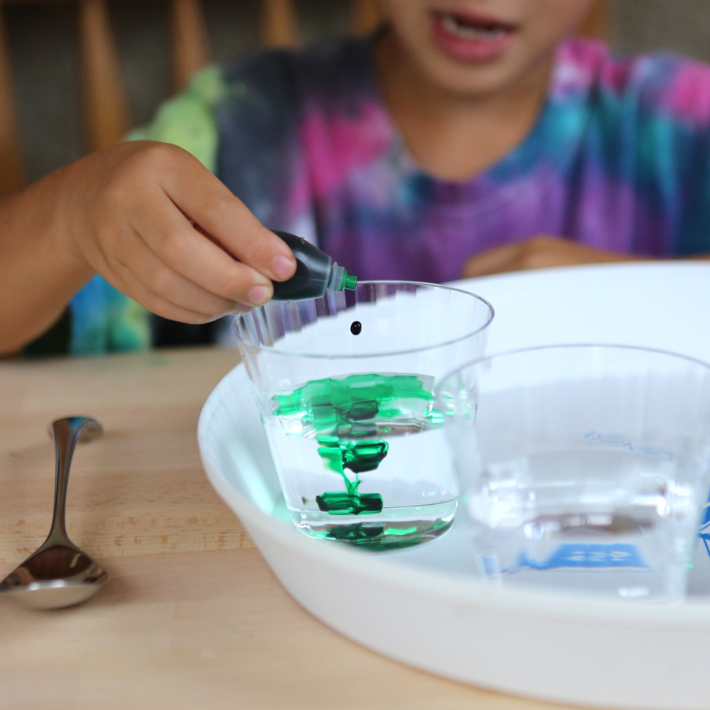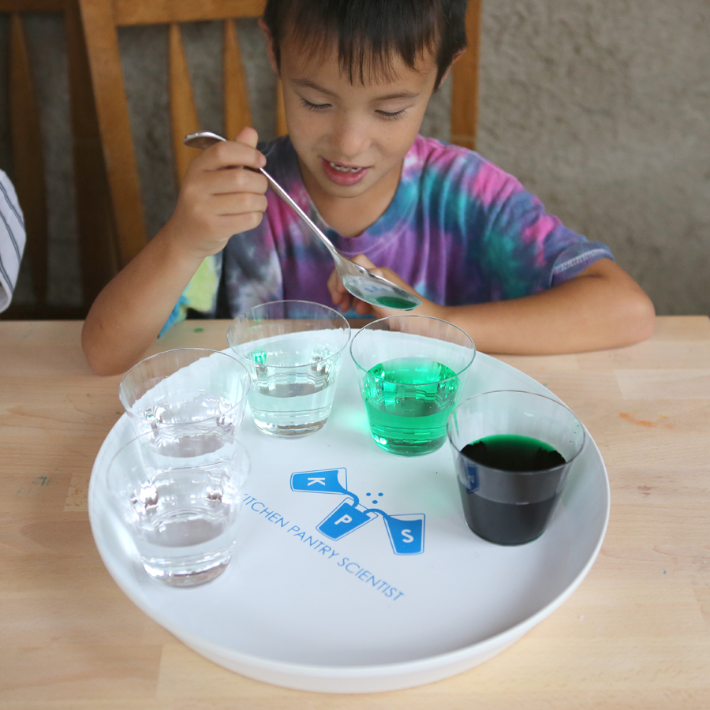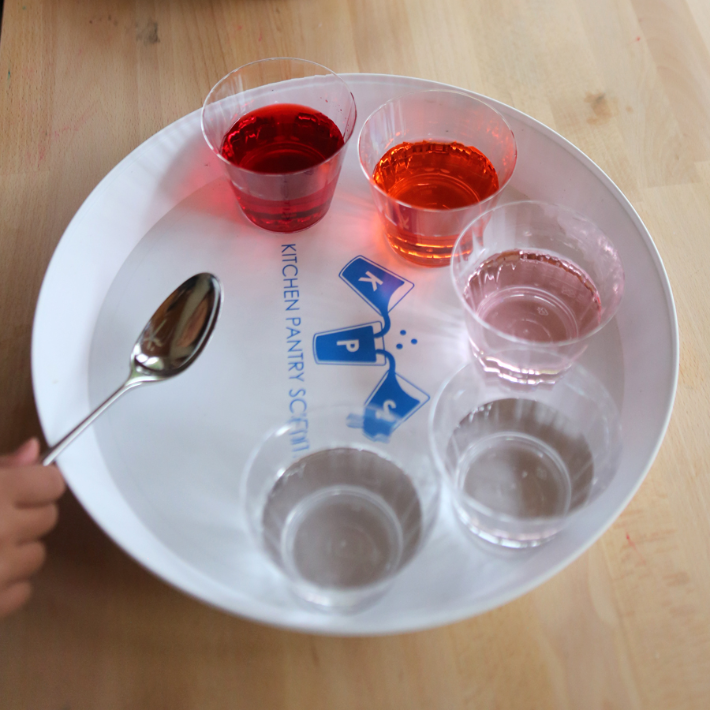Step 12: Ask your child to compare the color in the cups. Congratulate him — he's made a series of serial dilutions:
- Cup #1 - undiluted
- Cup #2 - 1 to 10 dilution
- Cup #3 - 1 to 100 dilution
- Cup #4 - 1 to 1000 dilution
- Cup #5 - 1 to 10,000 dilution
Instead of adding plain water to the cups, add water containing yellow food coloring to each cup. Do serial dilutions with another color, like blue, to test how color mixing works with different dilutions. Try it with other colors.
Serial dilutions are often used by scientists to quickly and accurately lower the concentration of a liquid. (Concentration refers to how many pieces of a certain substance are contained in a certain amount of something, like liquid or air.)
In this science/math activity, you do serial dilutions using breakfast cereal! Each time you dilute the milk/cereal mixture, you end up with fewer and fewer pieces of cereal in the cups, lowering the cereal concentration in each ½ cup of milk as you go.
Imagine that you’re a scientist testing some water from a well to get an exact count of how many bacteria are in a sample of the water. Too many bacteria in a single sample are impossible to count, like the cereal in the first cup. However, making serial dilutions of the well water make it so that the bacteria can be easily counted, like the cereal in the last cup. Using multiplication, it’s now possible to calculate how many bacteria were in the original sample.
---
This project and more like it are featured in Liz’s new book STEAM Lab for Kids: 52 Creative Hands-On Projects Using Science, Technology, Engineering, Art and Math (Quarry Books, spring 2018).
© Quarry Books, 2018/STEAM Lab for Kids; Photos: © Quarry Books


